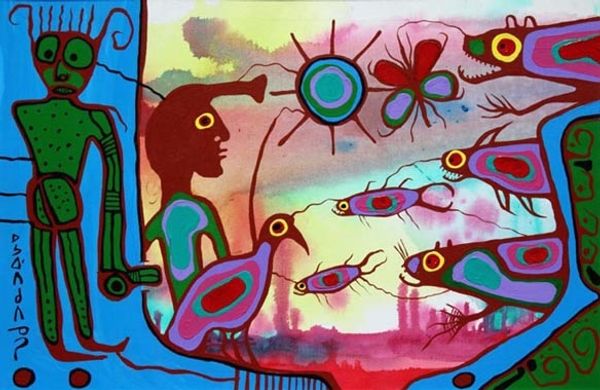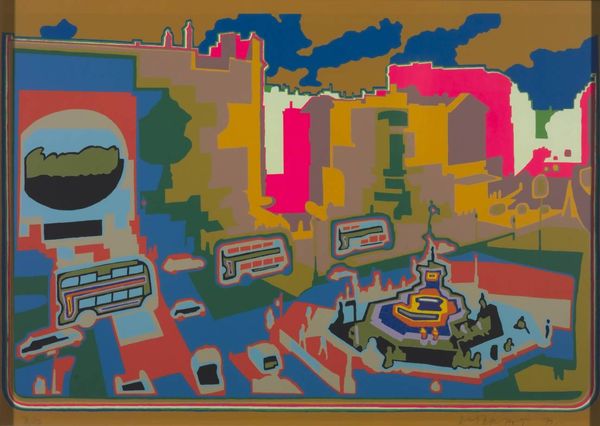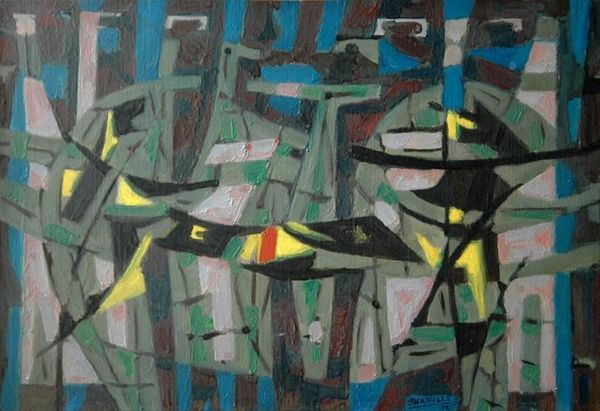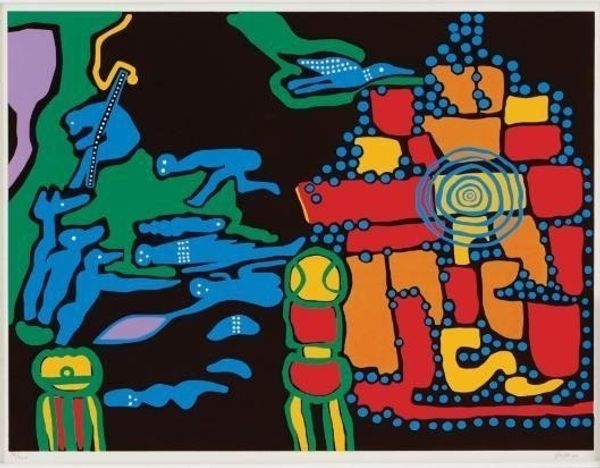
public-art
#
action-painting
#
graffiti
#
street-art
#
graffiti art
#
postmodernism
#
public-art
#
graffiti-art
#
street graffiti
Dimensions: image/sheet: 17.5 × 98.5 cm (6 7/8 × 38 3/4 in.) mount: 33.02 × 113.98 cm (13 × 44 7/8 in.)
Copyright: National Gallery of Art: CC0 1.0
Curator: We’re looking at Henry Chalfant's photograph, "Kel Cos Shy," taken in 1980. It captures a vibrant, painted subway car in New York City. Editor: My initial impression is one of raw energy. The colours explode, the lines are dynamic, and the sheer scale overwhelms. There's an immediate visual impact that's quite arresting. Curator: Absolutely. Chalfant’s work is crucial because he documented this ephemeral art form, preserving a vital slice of New York’s cultural history. We see here how graffiti wasn’t just vandalism; it was a form of expression tied to specific social conditions. Editor: Formally, observe the layers of tags and throws, creating this incredible depth, blurring the legibility of lettering. The photograph captures both the energy of the act and the considered artistic construction of the piece itself. The metallic substrate, visible here and there, shows its material origins, doesn’t it? Curator: Yes, the materiality is critical. These artists were appropriating public transport, using spray paint, markers, and other readily available materials, asserting their presence within the urban landscape. The act of painting a subway car became a challenge to established power structures and traditional notions of art. Editor: True. Beyond the social statement, note the visual rhyming taking place across the subway car's surface—repeating curves, color echoes, dark and light balancing the whole dynamic piece of "writing". You can sense that those authors have compositional intelligence as well as rebellious purpose. Curator: This is the point, isn’t it? Graffiti blurs the boundaries of 'high' and 'low' art. These writers, despite operating outside traditional art institutions, developed complex artistic practices, shaped by shared experiences of urban life and a DIY creative ethos. Their use of available materials should make us question art’s material and cultural boundaries, too. Editor: Indeed. Thinking about it, there’s an immediacy and intentionality that draws me in. Thanks for sharing, I’ll be sure to look more closely at its raw, structural energy. Curator: My pleasure. It underscores the power of considering the artistic labor and the societal impact when we examine a piece like "Kel Cos Shy".
Comments
No comments
Be the first to comment and join the conversation on the ultimate creative platform.













